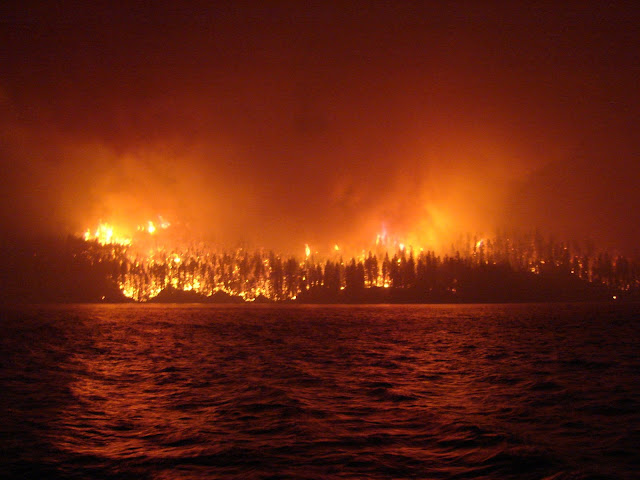Introduction
In recent years, Canada has witnessed a significant increase in the occurrence and severity of wildfires, posing a threat to both human lives and the environment. These devastating natural disasters have far-reaching consequences, affecting ecosystems, air quality, and communities across the country. This article delves into the causes of Canadian wildfires, explores their impacts, and highlights the ongoing response efforts to mitigate their effects.
1. The Rise of Canadian Wildfires
Over the past few decades, the frequency and intensity of wildfires in Canada have escalated significantly. This increase can be attributed to a combination of factors, including climate change, forest management practices, and human activities. It is crucial to understand these causes to develop effective strategies for prevention, mitigation, and response.
2. Factors Contributing to Wildfire Outbreaks
Canadian wildfires are influenced by several factors, such as climate conditions, fuel availability, and ignition sources. Rising temperatures, prolonged droughts, and changing precipitation patterns associated with climate change create favorable conditions for wildfires to ignite and spread rapidly. Additionally, the accumulation of forest fuels, such as dead trees, dry vegetation, and accumulated organic matter, serves as a ready source of fuel for fires.
3. Environmental Impacts of Wildfires
Wildfires have profound environmental impacts, affecting ecosystems and natural processes. The intense heat generated during these events alters soil composition, disrupts nutrient cycles, and damages vegetation. The loss of vegetation cover also leads to increased soil erosion, water runoff, and the degradation of aquatic ecosystems.
4. Effects on Air Quality
When wildfires burn, they release large quantities of smoke, particulate matter, and harmful gases into the atmosphere. This smoke can travel vast distances, resulting in reduced air quality not only in the immediate vicinity but also in neighboring regions and even across international borders. The resulting air pollution poses significant health risks to both humans and wildlife.
5. Threats to Biodiversity
Canadian wildfires pose a substantial threat to biodiversity. These events can destroy habitat, displacing or endangering numerous plant and animal species. Some ecosystems, like peatlands and boreal forests, are particularly susceptible to long-term damage, which can disrupt the delicate balance of biodiversity and ecosystem services they provide.
6. Economic Consequences
The economic consequences of wildfires are multifaceted. The direct costs include firefighting operations, infrastructure damage, and property loss. Indirect costs encompass impacts on tourism, reduced agricultural productivity, and increased healthcare expenses due to smoke-related health issues. The long-term economic recovery in affected regions can be a challenging and resource-intensive process.
7. Human Health and Safety
The impact of Canadian wildfires on human health and safety is a grave concern. As these fires engulf vast areas, they release smoke, ash, and harmful pollutants into the air, posing significant risks to nearby communities. The health effects can range from mild respiratory irritation to severe respiratory distress, particularly for individuals with pre-existing respiratory conditions like asthma or chronic obstructive pulmonary disease (COPD).
The smoke generated by wildfires contains fine particles, known as particulate matter (PM), which can penetrate deep into the lungs and enter the bloodstream. Prolonged exposure to high levels of PM can cause respiratory inflammation, reduced lung function, and increased susceptibility to respiratory infections. The elderly, children, and individuals with compromised immune systems are particularly vulnerable to these health effects.
Moreover, the smoke contains various toxic gases, such as carbon monoxide, nitrogen oxides, and volatile organic compounds (VOCs). These gases can cause headaches, dizziness, nausea, and even lead to more severe health conditions when inhaled in high concentrations. The long-term exposure to wildfire smoke has been linked to cardiovascular problems, including increased risks of heart attacks and strokes.
The evacuation of communities threatened by wildfires also presents challenges to human safety. Rapidly spreading fires can force residents to leave their homes at a moment's notice, causing stress, anxiety, and potential accidents during the evacuation process. Furthermore, the destruction of critical infrastructure, including roads and utilities, can hinder emergency response efforts, making it more challenging to provide immediate assistance to affected individuals.
To mitigate the health and safety risks associated with wildfires, it is essential to have robust emergency preparedness plans in place. These plans should include early warning systems, evacuation protocols, and public health advisories to inform and protect the population. Collaborative efforts between government agencies, fire services, and healthcare providers are crucial to ensure a coordinated response during wildfire events.
In addition, raising awareness among residents about the health hazards of wildfire smoke and providing guidance on protective measures, such as staying indoors, using air purifiers, and wearing N95 masks when necessary, can help minimize the adverse effects on individuals' well-being.
Overall, addressing the health and safety impacts of Canadian wildfires requires a comprehensive approach that combines effective emergency response strategies, community engagement, and proactive measures to reduce the occurrence and severity of these devastating fires.
Conclusion
Canadian wildfires pose significant challenges to the environment, communities, and public health. Understanding the causes, impacts, and response efforts associated with these fires is crucial for developing effective strategies to prevent, mitigate, and respond to wildfire events. Through collaborative efforts, increased awareness, and proactive measures, we can strive to protect both the natural ecosystems and the well-being of individuals affected by these destructive forces of nature.

